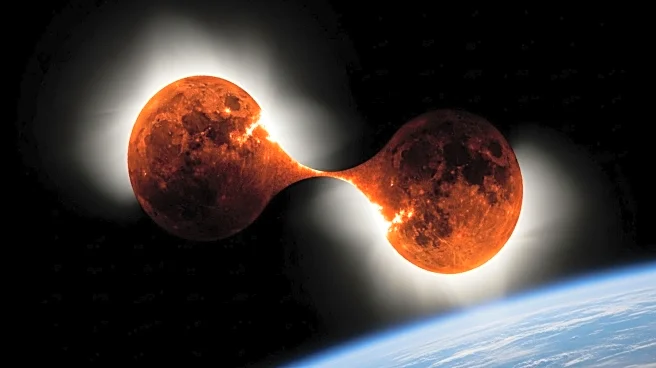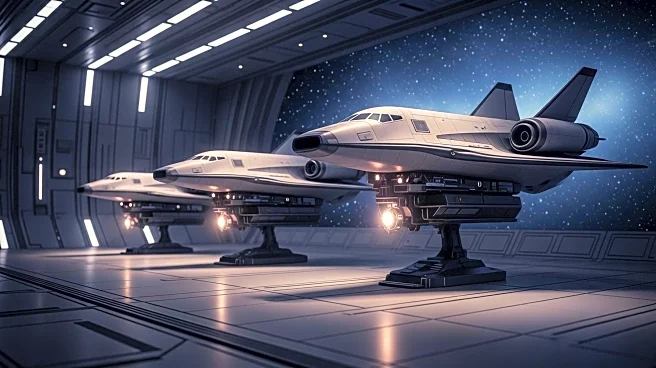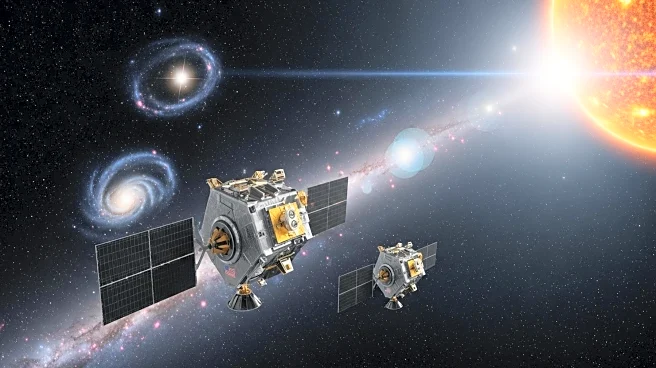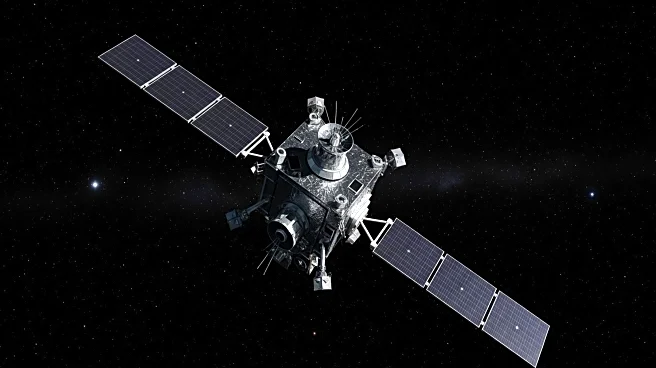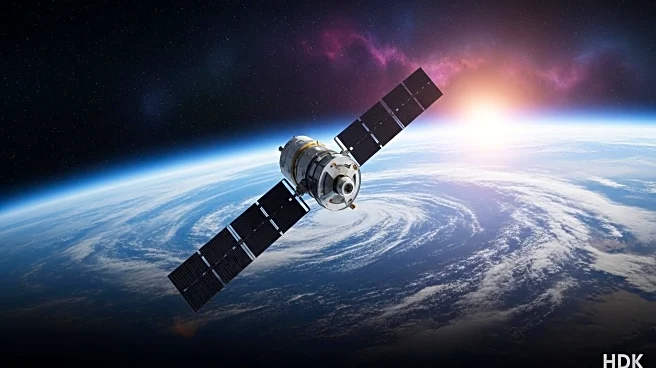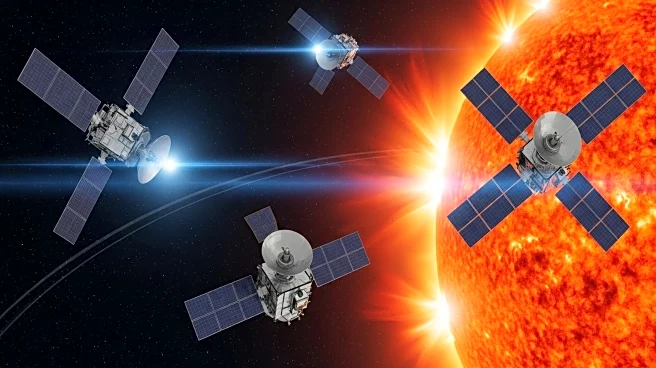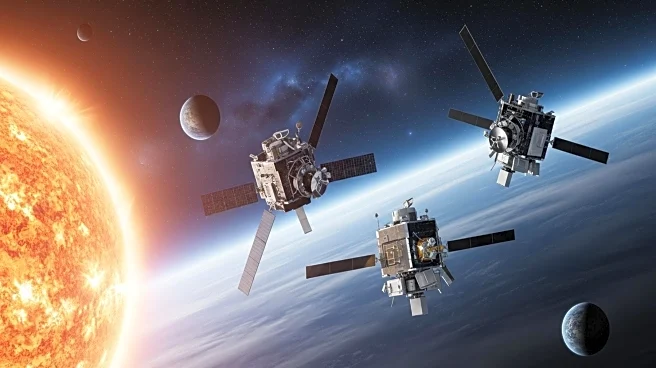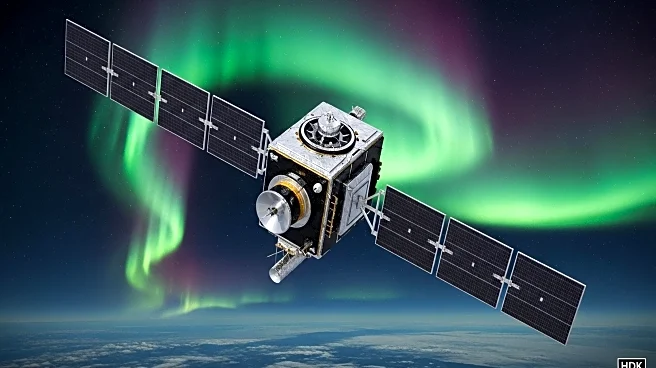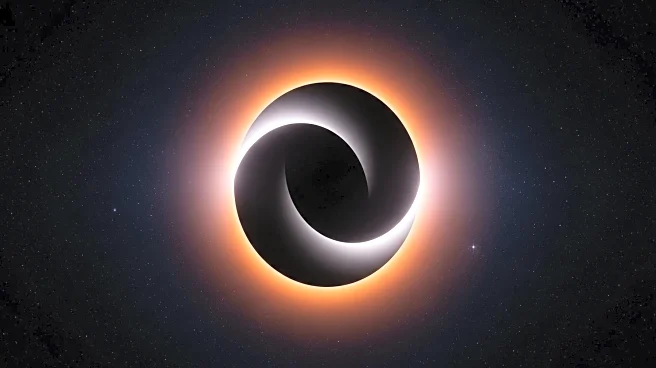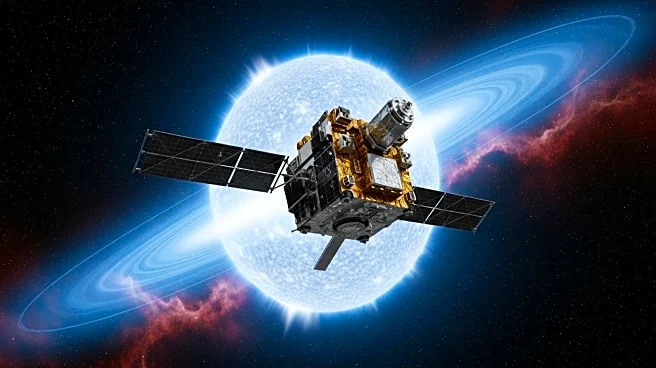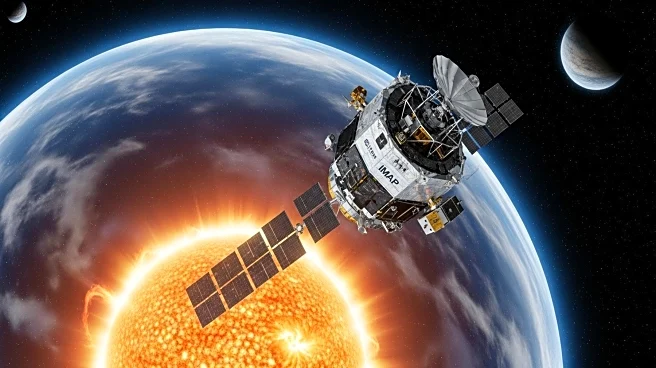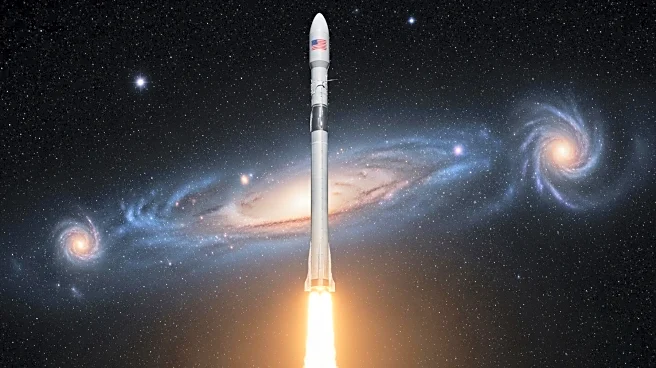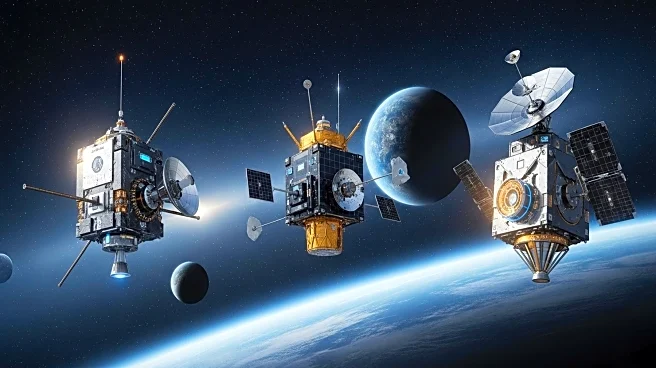What is the story about?
What's Happening?
On September 21, NOAA's GOES-19 satellite captured rare footage of a natural solar eclipse from space. The satellite's Compact Coronagraph-1 (CCOR-1) recorded the moon passing between the instrument and the sun, creating a true solar eclipse. This event was unusual because the moon's path appeared crooked due to a scheduled yaw-flip maneuver of the spacecraft. The maneuver altered the satellite's orientation, affecting the imagery captured by CCOR-1. This may be the first time a space-based coronagraph has recorded a natural eclipse, as other coronagraphs stationed farther away in space do not have the moon pass through their field of view.
Why It's Important?
The capture of a natural solar eclipse from space by NOAA's GOES-19 satellite is significant for space weather research and the study of the sun's corona. It provides scientists with unique data to analyze the sun's outer atmosphere, which is crucial for understanding solar activity and its impact on Earth. This event also highlights the capabilities of space-based instruments in observing celestial phenomena, potentially leading to advancements in space weather forecasting and solar research. The findings could benefit industries reliant on satellite communications and navigation systems, which are affected by solar activity.
What's Next?
Following this rare observation, scientists may conduct further analysis of the data collected during the eclipse to enhance understanding of the sun's corona. Future missions and satellite maneuvers could be planned to capture similar events, providing more opportunities for research. The results may influence the design and operation of future space-based coronagraphs, improving their ability to study solar phenomena. Additionally, collaborations between space agencies could be strengthened to share data and insights from such unique observations.
Beyond the Headlines
The observation of a natural solar eclipse from space raises questions about the potential for new discoveries in solar physics. It may lead to the development of more advanced instruments capable of capturing detailed imagery of the sun's corona. Furthermore, the event underscores the importance of international cooperation in space exploration, as shared data can enhance scientific understanding and technological innovation.
AI Generated Content
Do you find this article useful?
